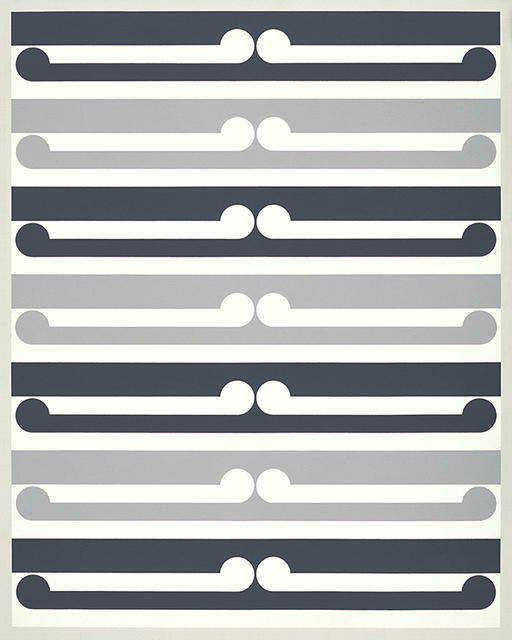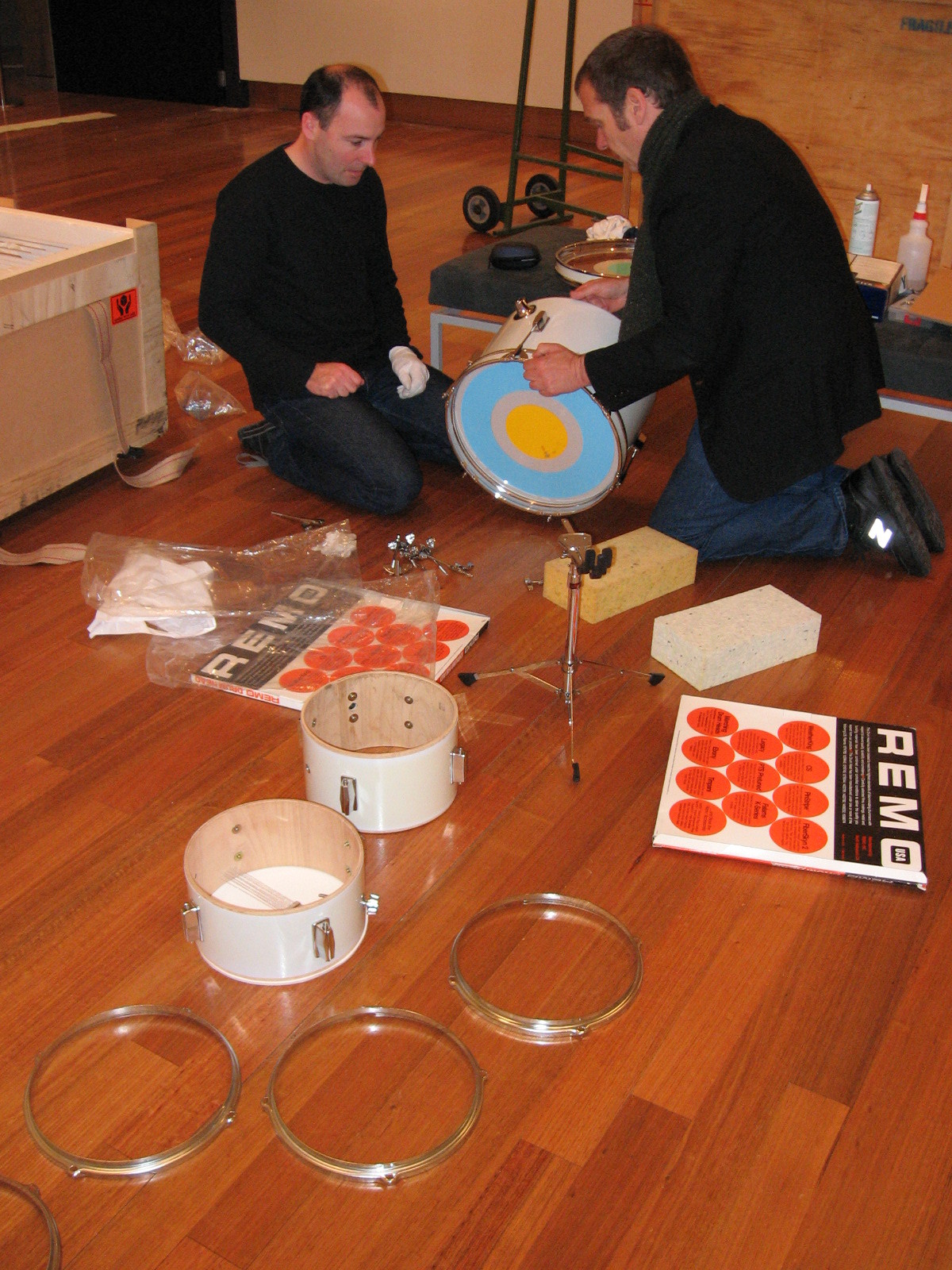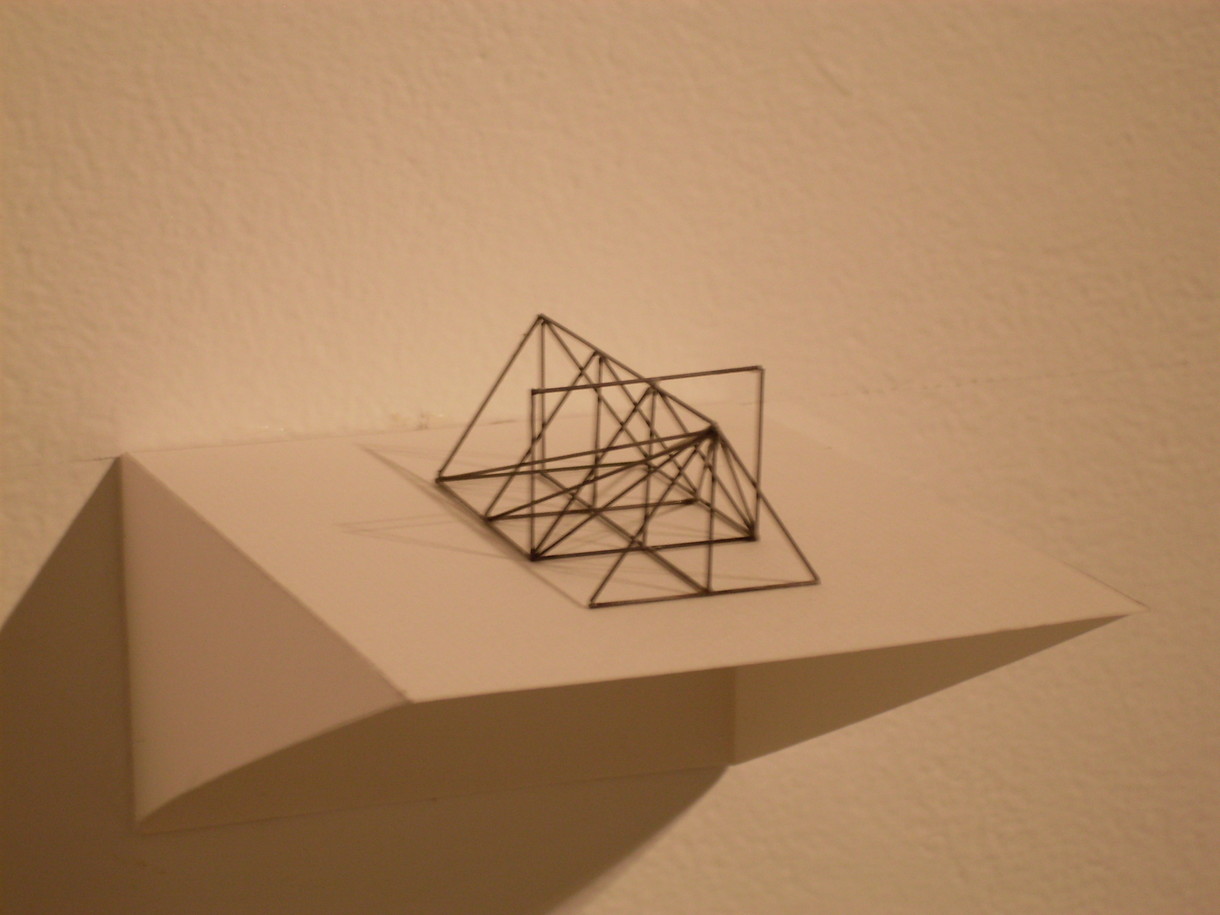Gordon Walters - Untitled (koru series)
Gordon Walters - Untitled (koru series)
An introduction to Gordon Walters's Untitled (koru series) (1981), narrated by New Zealand actor Sam Neill.
Related reading: Op + Pop
Collection

Gordon Walters Untitled
Brought to light, November 2009- 22 February 2011
Many opinions have been offered on the remarkable ‘koru’ paintings made by Gordon Walters. Merging the geometry of modernist abstract painting with the unfurling fern motif from Maori art, these paintings are meditations on the theme of exchange – the way forms and ideas move from one place to another and change along the way. In the 1990s the koru works found themselves caught up in a debate about the rights and wrongs of cross-cultural borrowing. More recently, writers have argued that the powerfully visual qualities of these works have yet to be fully explored.
In 1947 Gordon Walters visited Theo Schoon in South Canterbury, where Schoon was recording Māori rock drawings. It was one of many occasions on which Walters drew inspiration from traditional Māori art. When he travelled to Europe in 1950, Walters realised that modern art had learned important lessons from the arts of the Pacific. Soon after, he began working with the koru, or fern bud, motif – a Māori decorative form used on rafter paintings, incised gourds and in tattooing. In the extraordinary series of abstract paintings that resulted, this simple form expresses a vast range of dynamic relationships.
Notes

To the memory of Julian Dashper
One of the highlights for staff over the eight or so years that the Christchurch Art Gallery was open prior to the shakes was the opportunity to work alongside Julian Dashper on his exhibition To The Unknown New Zealander.
Notes

Untitled 1956 by Gordon Walters
This article first appeared as 'Balancing act' in The Press on 17 August 2012.
Notes

Glittering
When it comes to posting comprehensive pictures of your new exhibitions online, opinion is divided.
Notes

Selected proofs
Peter Trevelyan's exhibition Selected Proofs is currently on at the University of Canterbury's SOFA Gallery until 7th September.
Article

The pleasure of making: objects taking centre stage in the space of the art gallery
Was it serendipity that the opening of Christchurch Art Gallery's Burster Flipper Wobbler Dripper Spinner Stacker Shaker Maker coincided with that of Slip Cast, a group exhibition at the Dowse Art Museum that also focused on the pleasure that artists take in manipulating materials in the process of making art?
Article

New Zealand in the Biennale of Sydney and the Biennale of Sydney in New Zealand
and the Biennale of Sydney in New Zealand
Collection

Reuben Paterson Te Pūtahitanga ō Rehua
As a young boy, Reuben Paterson used to play with the sparkling black sand on Piha beach; now as an artist he often uses glitter in his works. In this one, he took inspiration from Māori mythology connected with water, cleansing, transformation and stars. Pūtahitanga can mean constellation. Rehua was a son of Rangi-nui (the sky father) and Papa-tū-ā-nuku (the earth mother), and is associated in Tūhoe legend with the star Antares. To make this dazzling kaleidoscopic landscape, Paterson digitally layered and rearranged his own drawings. He likens the shifting black and white patterns to the restless energies and histories that have unfolded on the whenua (land) of Aotearoa New Zealand. Their optical push-and-pull highlights that what can be seen depends on who is doing the looking. What catches your eye?
(Wheriko - Brilliant! 17 May 2019 – 16 February 2020)
Collection

Julia Morison Tootoo
Julia Morison’s Tootoo was created as part of a brim-full series of multi-panelled paintings called Gargantua’s Petticoat. The series is an array of riotous provocation, full of abstracted sensual forms that allude to corsetry and piercings, petticoats and hula hoops, bed springs and bandages. Julia was painting lecturer at the University of Canterbury from 1999–2007. This followed eight years living in France, an originally unanticipated outcome of being awarded the one-year Moët et Chandon Fellowship artist residency in 1990.
(Perilous: Unheard Stories from the Collection, 6 August 2022- )
Collection

Simon Morris June Pause
Op + Pop 6 February – 19 June 2016
Packed with an energetic sense of movement, Simon Morris’s painting gives the effect of a boldly rhythmic musical score. Its pattern, appearing at first to be random or chaotic, is found to be sequenced and repeating, and with diagonals regularly breaking up the picture plane.
Morris builds on the legacy of pioneering New Zealand geometric abstractionists such as Carl Sydow and Gordon Walters. This optical sequence was generated by a mathematical formula, which he says “creates images that I wouldn’t come up with myself. It’s like the system partly makes the work.”
